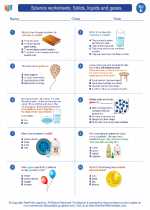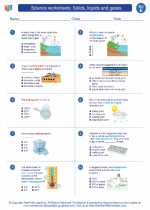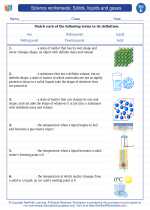Gay-Lussac's Law
Gay-Lussac's Law, also known as the pressure-temperature law, is one of the gas laws discovered by the French chemist Joseph Louis Gay-Lussac in the early 19th century. This law describes the relationship between the pressure and temperature of a gas at constant volume.
The Law
The law can be expressed as:
center;">P1/T1 = P2/T2
- P1 and T1 represent the initial pressure and temperature of the gas.
- P2 and T2 represent the final pressure and temperature of the gas.
- The temperatures T1 and T2 must be in absolute temperature (usually in Kelvin).
Explanation
Gay-Lussac's Law states that the pressure of a gas is directly proportional to its absolute temperature when the volume is held constant. In other words, as the temperature of a gas increases, so does its pressure if the volume remains the same. Similarly, if the temperature decreases, the pressure of the gas will also decrease, assuming the volume is constant.
Study Guide
Here are some key points and tips to remember when studying Gay-Lussac's Law:
- Understand the relationship between pressure and temperature in a gas at constant volume.
- Remember that temperature must be in absolute units (Kelvin) when using the formula.
- Practice using the formula P1/T1 = P2/T2 with different sets of pressure and temperature values to understand the concept better.
- Be familiar with real-life applications of the law, such as the behavior of gases in various systems and industrial processes.
- Review and understand the historical significance of Gay-Lussac's Law and its contribution to the field of chemistry and physics.
Understanding Gay-Lussac's Law is important not only for academic purposes but also for understanding the behavior of gases in various practical scenarios.
Happy studying!
.◂Science Worksheets and Study Guides Fifth Grade. Science worksheets: Solids, liquids and gases.

 Worksheet/Answer key
Worksheet/Answer key
 Worksheet/Answer key
Worksheet/Answer key
 Worksheet/Answer key
Worksheet/Answer key
 Vocabulary/Answer key
Vocabulary/Answer key
